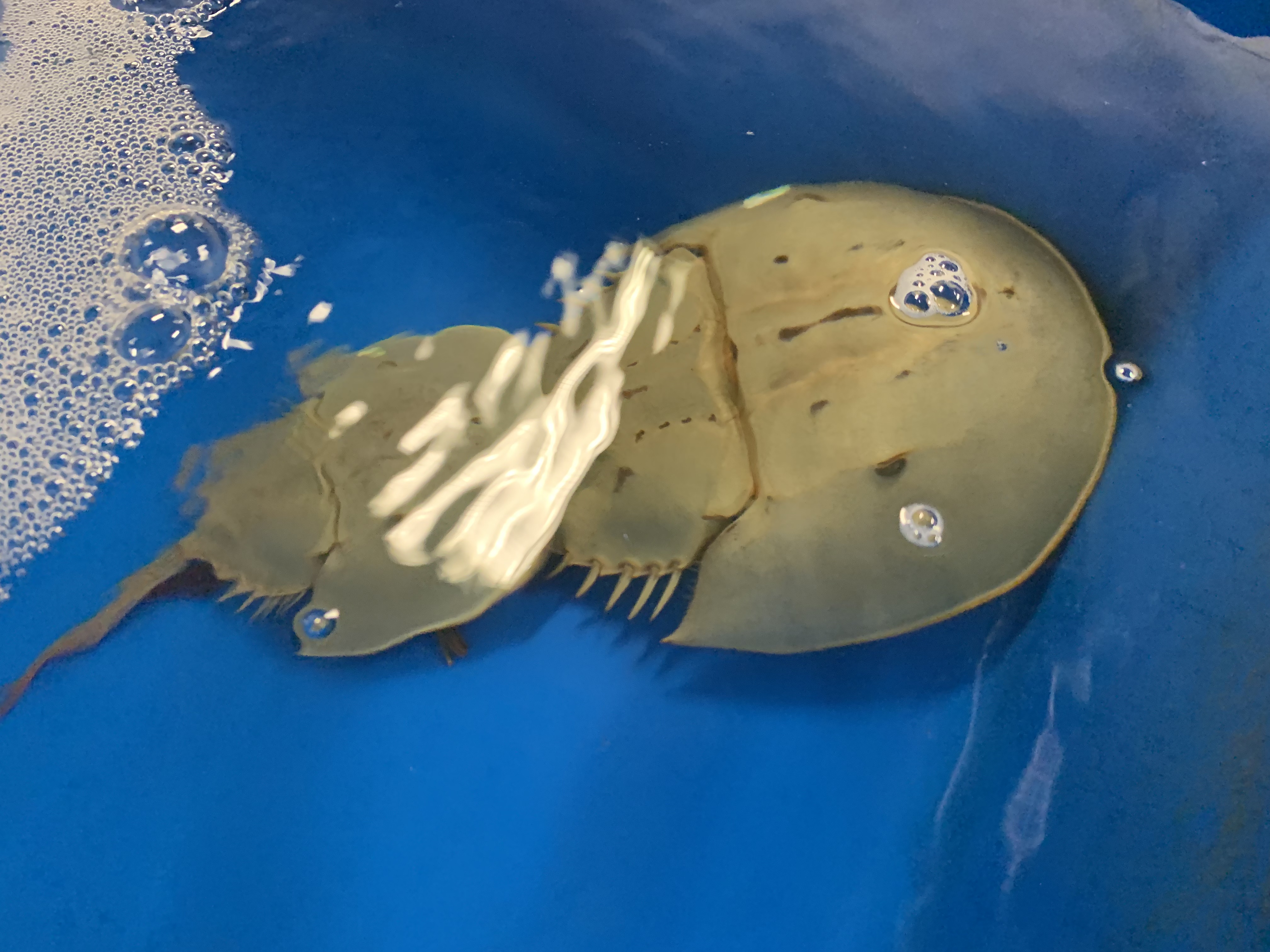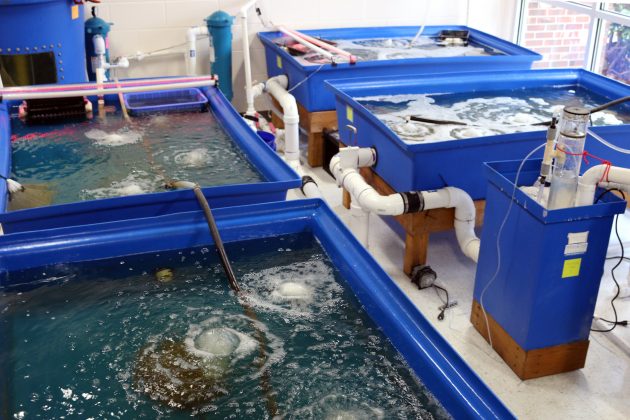
Features
disease management
Research
RAS key to horseshoe crab aquaculture for sustainably sourced medical resource
July 14, 2020 By Bonnie Waycott

A new study from the U.S. holds great promise for ensuring a stable supply of a key substance for modern medicine without depleting its biological source.
Horseshoe crabs (Limulus polyphemus) are the only known source of limulus amebocyte lysate (LAL), an indispensable substance used in sterility testing to ensure that drugs and medical devices are free from potentially deadly bacteria.
In the new study, “Horseshoe Crab Aquaculture as a Sustainable Endotoxin Testing Source,” researchers were able to prove that harvesting LAL from horseshoe crabs in captivity yields great results.
“This paper is connected to one of our original research projects on an alternative bait for the fishing industry,” said Anthony Dellinger, one of the study’s authors and president of Kepley BioSystems, a life science start-up in North Carolina. “When we discovered the complexity associated with horseshoe crabs, not just as a bait but also as a biomedical resource, we thought that we could make a meaningful contribution to the medical industry and find a more efficient way of harvesting horseshoe crabs.”
The demand for LAL has resulted in the extensive capture and bleeding of horseshoe crabs from the wild, which has caused increasing concerns over the well-being and survivability of the species.

Researchers found that harvested horseshoe crabs survive and thrive in a RAS rearing environment, ensuring a more sustainable process for harvesting LAL substance for the medical industry.
The study introduces a recirculating aquaculture system (RAS) designed to facilitate LAL harvesting and maintain animal wellbeing. To achieve a low-impact, routine LAL harvesting method, a catheter that can be surgically implanted in the horseshoe crabs was also developed.
Two holding tanks (4ft x 6ft x 1ft, salinity 19.5-22.0‰), a biofiltration tank and a solids separation tank were used while a piston air pump supplied oxygen. Water was recirculated through biological filtration tanks to enable purification, hygiene and disease prevention. Water parameters were measured and adjusted six times a week while sodium bicarbonate maintained alkalinity and pH.
The horseshoe crabs were stocked at a density of one animal per three square feet and given a feed containing protein, lipids, carbohydrates and gelatin. The gelatin provided rigidity and extended water stability, enabling the horseshoe crabs to forage on the tank floor to accommodate bottom scavenging.
“We tried to develop a feed that would maintain healthy blood parameters. We can also manipulate it to give us potentially more reactive LAL, which is really important,” said Rachel Tinker-Kulberg, another author of the study.
“We want to ensure that the horseshoe crabs can survive for over 10 years in aquaculture with all the necessary nutrients that stimulate the production of healthy hemocyanin levels and amebocytes,” said Dellinger.
The team found that all horseshoe crabs in the RAS displayed their natural behavior, maintained body weight, grew consistently and thrived for over 12 months with zero percent mortality rate. They also survived catheter implantation.
“To satisfy all LAL requirements by the medical industry, we would only need to capture 10 percent of horseshoe crabs for a year and keep them alive for up to 10 years in culture,” said Tinker-Kulberg. “LAL can vary in its activity from batch to batch, and when you’re working with biomedical tools you don’t want variation. You need to know that what you’re working with is consistent. Aquaculture is a great conservation tool for horseshoe crabs and great way to manage the quality and viability of the product we get out.”
The quality of LAL from horseshoe crabs in aquaculture was also found to be higher than LAL from their counterparts in the wild. This may make LAL assays on human blood possible – a welcome result for patients at risk of life-threatening conditions. Dellinger and Tinker-Kulberg believe that in light of the coronavirus pandemic, this is timely and important.
“LAL assays for humans, without putting more pressure on wild horseshoe crabs, will allow us to intervene early before symptoms worsen. We’ll also be able to monitor treatment efficacy and have a better idea of when it could end,” they said.
Print this page